Managing accounts receivable (AR) efficiently is critical to maintaining a steady cash flow and sustaining growth. However, many businesses still rely on manual payment collection processes, which can be time-consuming, error-prone, and inefficient. Automated payment collections have emerged as a game-changer, providing businesses with a streamlined approach to invoicing, tracking payments, and managing overdue accounts.
If your business hasn’t yet embraced automation, here’s why you should consider making the switch—and how dual price processing and industry software integrations can enhance your payment collection strategy.
The Downsides of Manual AR Processes
Traditional AR processes involve manually generating invoices, tracking payments, and following up on overdue accounts. While this method may have worked in the past, it comes with significant downsides:
Increased Errors: Manual entry increases the risk of mistakes, leading to billing discrepancies and disputes.
Slower Processing Times: Paper-based invoices and check payments take longer to process, delaying revenue collection.
Higher Labor Costs: More staff hours are required to manage AR tasks, increasing operational costs.
Limited Scalability: As businesses grow, manual processes struggle to keep up with increasing transaction volumes.
Cash Flow Challenges: Late payments and overlooked invoices can disrupt cash flow and financial planning.
Lack of Visibility: Without real-time data, businesses struggle to track outstanding payments and make informed decisions.
The Benefits of Automating Payment Collections
Automating AR processes can resolve these inefficiencies and enhance overall business performance. Here are some key benefits: accounts receivable (AR) efficiently is critical to maintaining a steady cash flow and sustaining growth.
1. Faster Payments & Improved Cash Flow: Automation speeds up the invoicing and payment process by enabling businesses to send electronic invoices instantly, set up automated payment reminders, and provide convenient online payment options. This reduces payment delays and stabilizes cash flow.
2. Minimize Manual Errors: Automation reduces the likelihood of human errors in invoice generation, payment reconciliation, and account tracking, ensuring more accurate financial records.
3. Reduced Administration: By eliminating repetitive manual tasks, businesses can cut down on labor expenses while allowing staff to focus on strategic growth initiatives rather than chasing down payments.
4. Better Customer Experience: Customers appreciate the convenience of automated payment options. With digital invoices, online portals, and automated reminders, businesses can provide a seamless and professional payment experience.
3. Actionable Insights & Reporting: AR automation tools provide real-time analytics and reports that help businesses track payment trends, identify delinquent accounts, and optimize collection strategies.

How Dual Price processing Enhances Automated Collections
Dual price processing allows businesses to offer both cash and card payment options with transparent pricing. When integrated with automation software, businesses can automatically apply the correct pricing structure to invoices, reducing disputes and ensuring compliance with industry regulations.
For example, an automated system can:
Generate invoices with clearly stated cash and card prices.
Apply automatic price adjustments based on the customer’s payment method.
Ensure compliance with dual pricing regulations across different states.
By combining automation with dual price processing, businesses can not only improve payment efficiency but also maximize cost savings by encouraging customers to pay with lower-cost payment methods.
Industry Software Integrations for AR Automation
Integrating automation with industry-specific software enhances efficiency by streamlining AR processes within existing business operations. Some key integrations include:
Point-of-Sale (POS) Systems: Syncing AR automation with POS systems ensures that invoices and payments are automatically recorded, reducing reconciliation efforts.
Enterprise Resource Planning (ERP) Software: ERP integration allows for seamless data flow between sales, accounting, and AR management.
Customer Relationship Management (CRM) Platforms: Automated reminders and customer payment histories improve customer interactions and collections efficiency.
Payment Gateways: Secure integrations with payment processors enable real-time transaction processing and automated settlements.
The Future of AR is Automation
Businesses that automate their payment collections gain a competitive edge by reducing administrative burdens, improving cash flow, and enhancing the customer experience. When combined with dual price processing and robust industry software integrations, automation creates a seamless, efficient, and profitable payment collection system.
By implementing automation, your business can eliminate common AR challenges, reduce costs, and focus on growth rather than chasing down payments. If you’re ready to modernize your collections process, PayLo Pro can help you integrate automated solutions that align with your business needs. Contact us to take control of your payment collections today—automate with PayLo Pro!







